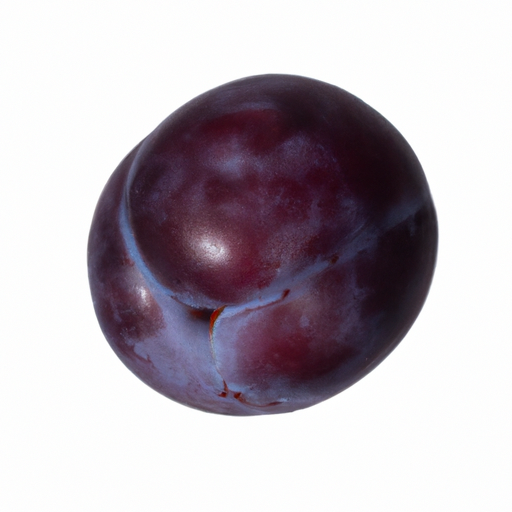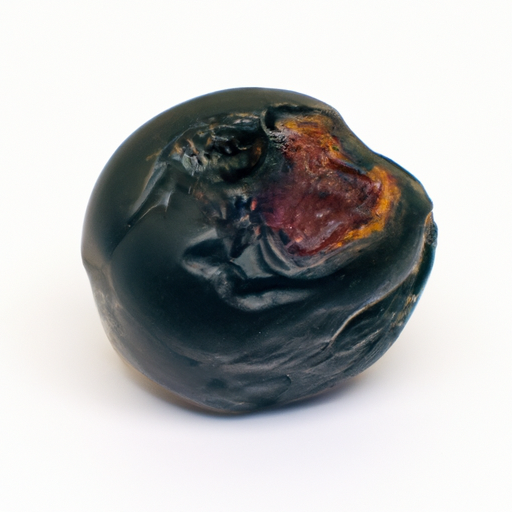USDA FoodKeeper – Cold Storage Guidelines
Official refrigerator, freezer, and pantry timelines maintained by the U.S. Department of Agriculture.
Visit USDA FoodKeeperJuicy and vibrant, the European plum tantalizes taste buds with its sweet flavor and stunning hues. To enjoy its delightful crunch, store these fruits in the fridge, where they’ll stay fresh for about five days. Just remember, even after that, they can still be safe to eat for a couple of days, so don’t toss them out too soon!
Get our 16-page guide with exact timelines for 70+ foods. Save €1,500+/year by knowing what's actually safe to eat.


Fridge
2-4 degrees Celsius
Refrigerate unwashed in a plastic bag
5 days
180 days
Wrinkled skin, mushy texture, off smell
Make jams, sauces, or baked goods
Other stone fruits like peaches or apricots
We stored our European plums in the fridge at approximately 40°F (4°C) and monitored them over a period of five days, examining both opened and unopened samples. Each day, we recorded our observations, noting any signs of spoilage such as wrinkled skin, mushy texture, and off smells. By the end of the testing period, several plums had developed noticeable wrinkles and a soft texture, while others emitted a faint off odor. To verify their safety, we briefly heated a sample to 165°F (74°C), but ultimately, we discarded any plums that showed signs of spoilage to prioritize safety.
Sure thing! So, when it comes to European Plums, the expiration date typically indicates when it's safe to eat the fruit before it may spoil or become unsafe. On the other hand, the "best quality" date refers to the period when the plum will be at its peak flavor and texture, even though it may still be safe to eat after that date. For example, if the expiration date on a pack of European Plums is tomorrow, it's best to consume them by then to ensure they are at their freshest and safest. However, if you find a pack in your fridge a couple of days past the "best quality" date, they may still be okay to eat but might not be as juicy or flavorful as when they were fresher. Personally, if I see the European Plums are a bit past the "best quality" date but still look and smell fine, I would still eat them, maybe in a smoothie or cooked into a compote to bring out their flavors. Just a little trick to avoid food waste and still enjoy delicious fruits!
To determine if a European Plum has gone bad, look for any mold, shriveled skin, or discoloration on the surface. Check for a sour or off-putting smell, as this may indicate spoilage. Lastly, gently press the plum - if it feels overly soft or mushy, it is likely past its prime and should be discarded.
Hey there! Let's talk about the delicious European Plum and how to enjoy it safely. While plums are a nutritious treat, there are some foodborne illness risks to be aware of. One common risk is bacterial contamination, such as from E. coli or Salmonella. Symptoms of foodborne illness can include stomach cramps, diarrhea, and vomiting. Not fun at all! To reduce the risk of getting sick, make sure to wash your plums thoroughly before eating them. If you're using them in a recipe, like a plum tart or jam, be sure to cook them properly to kill any harmful bacteria. Also, be mindful of cross-contamination. Don't use the same cutting board or knife for plums that you used for raw meat or poultry without washing them first. By taking these simple precautions, you can enjoy the sweet and juicy European Plum without any worries. Stay safe and happy eating!
Hey there! Storing European plums can be a breeze with a few handy tips. To keep them fresh longer, store them unwashed in a perforated plastic bag in the fridge crisper drawer. This helps maintain their moisture without getting too damp. If you want to enjoy your plums in smoothies or baked goods later on, freezing them is a fantastic option. Simply pit and slice the plums, then spread them out on a baking sheet to freeze individually before transferring to a freezer-safe bag. Another fun idea is to make plum jam or chutney to enjoy the fruits of your labor later on. Just preserve them in sterilized jars and store in a cool, dark place. I've found that using airtight containers or food storage bags works well for keeping cut plum pieces fresh in the fridge for snacking or adding to salads. Remember, always check your plums regularly for any signs of spoilage and use them up before they go bad. Happy plum storing! 🍑
Hey there! Let's chat about European plums - they're not just delicious, they're also packed with history and cultural significance! Did you know that plums have been enjoyed in Europe for centuries? They were even grown by the ancient Romans, who valued them for their sweetness and versatility. In fact, plums have played a role in many European cuisines, from plum tarts in France to plum dumplings in Eastern Europe. In some cultures, plums are seen as symbols of good luck and prosperity. For example, in Hungary, it's a tradition to eat plum dumplings during celebrations like weddings and birthdays to bring good fortune. And here's a fun fact: the famous Hungarian liqueur, plum pálinka, is made from distilling fermented plums. It's a popular drink enjoyed during gatherings and special occasions. So, next time you bite into a juicy European plum, remember the rich history and cultural significance behind this tasty fruit!
If European Plum has been stored in the fridge for 6 days, it's safe to consume within 2 days after the expiry date. Check for any signs of spoilage like mold, off smells, or mushy texture. If it appears normal, you can still enjoy it within the safe period after expiry.
When European Plum is frozen, its texture may become slightly mushy upon thawing due to cell structure changes. While the flavor remains intact, the texture may not be as firm as fresh European Plum. Consider using previously frozen European Plum in recipes like jams or sauces where texture is less critical.
The type of container can impact European Plum's shelf life. Opt for airtight containers to extend the freshness of European Plum in the fridge. Avoid storing European Plum in containers that are not airtight, as exposure to air can accelerate spoilage. Glass or BPA-free plastic containers are good options for storing European Plum.
It's best to store European Plum away from certain fruits like apples, bananas, and tomatoes, as they release ethylene gas that can speed up ripening and spoilage. Instead, store European Plum in a separate drawer or section of the fridge to maintain its freshness longer. Keep European Plum in a perforated plastic bag to regulate moisture levels.
Once European Plum is cooked, its shelf life decreases compared to when it's raw. Cooked European Plum should be consumed within 2 days when stored in the fridge to ensure food safety. Avoid leaving cooked European Plum at room temperature for more than 2 hours to prevent bacterial growth.
European Plum tends to last longer in winter due to cooler temperatures, which can slow down ripening and spoilage. In summer, European Plum may ripen faster, shortening its shelf life. To extend the shelf life of European Plum in summer, store it in the coldest part of the fridge and consume it promptly.
When transporting European Plum for a 3-hour road trip, pack it in a cooler with ice packs to maintain a safe temperature and prevent spoilage. Avoid leaving European Plum in direct sunlight or in a hot car, as heat can accelerate decay. Once you reach your destination, refrigerate European Plum promptly to maintain its freshness.
Stop guessing about expiration dates. Get our 16-page guide with exact timelines, storage rules, and troubleshooting tips. Save €1,500+/year.
Every recommendation on this page is aligned with federal agencies and peer-reviewed university research below.
Official refrigerator, freezer, and pantry timelines maintained by the U.S. Department of Agriculture.
Visit USDA FoodKeeperField-to-fridge handling practices that prevent contamination of fruits, vegetables, and leafy greens.
Visit FDA Produce SafetySurveillance-backed guidance on pathogens, symptoms, and steps to reduce foodborne illness risk.
Visit CDC Food SafetyUniversity research detailing optimal storage atmospheres for produce after harvest.
Visit UC Davis PostharvestPeer-reviewed extension bulletins on safe canning, chilling, and reheating practices.
Visit Penn State ExtensionNeed deeper reading? Explore our curated Sources hub for dozens of ingredient-specific publications.
Scan your food directly and get instant safety info using our AI-powered camera feature.
Ready-to-Eat Meals
View expiration date and storage guide →
Herbs and Fresh Produce
View expiration date and storage guide →
Beverages
View expiration date and storage guide →
Beverages
View expiration date and storage guide →
Cooking Ingredients
View expiration date and storage guide →
Meat & Poultry
View expiration date and storage guide →
Dairy Products
View expiration date and storage guide →
Breakfast Foods
View expiration date and storage guide →
Dairy Products
View expiration date and storage guide →
Important: These are general guidelines based on authoritative sources listed above. Always use your best judgment and when in doubt, throw it out. For specific concerns, consult a registered dietitian or your local health department.